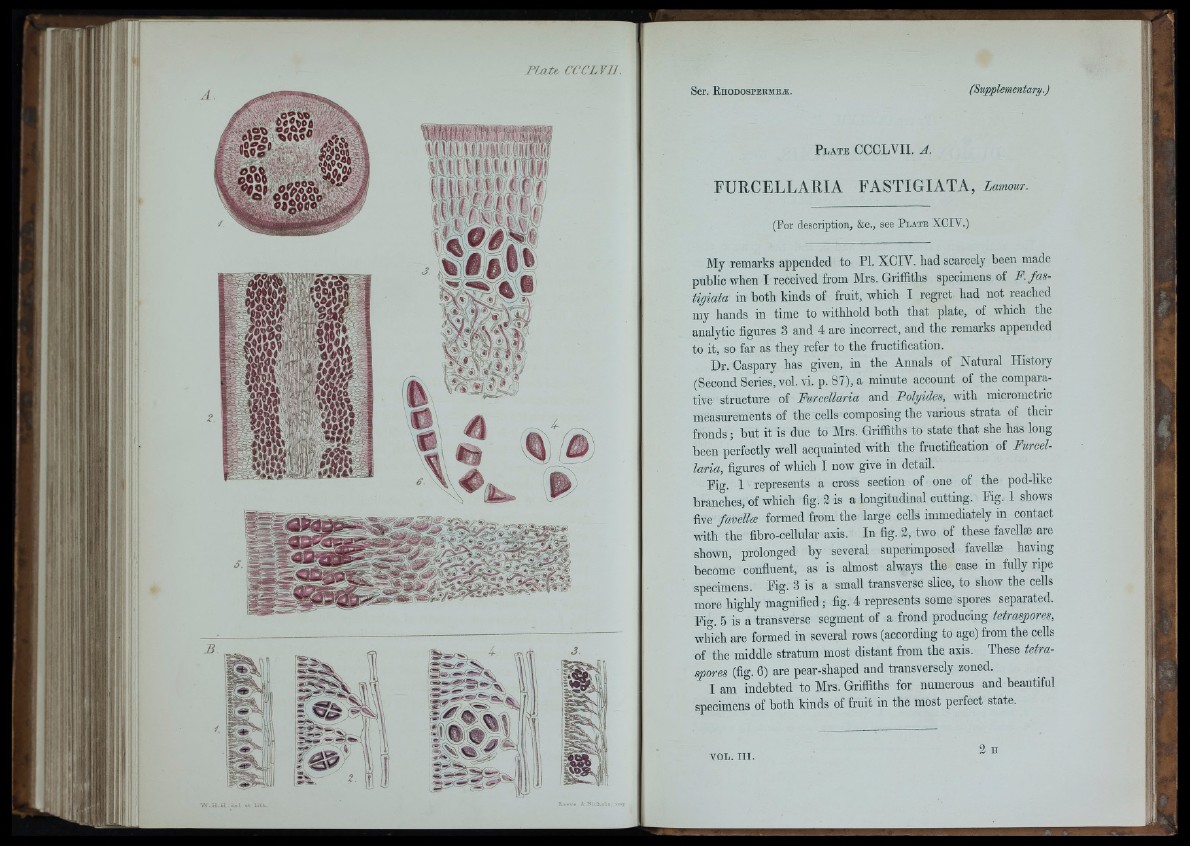
Htrvr -NitKo.
FURCELLARIA FASTIGIATA, Lmmur.
(For description, &c., see P late XCIV.)
My remarks appended to PI. XCIV. had scarcely been made
public when I received from Mrs. Griffiths specimens of F. fa s tigiata
in both kinds of fruit, which I regret had not reached
my hands in time to withhold both that plate, of which the
analytic figures 3 and 4 are incorrect, and the remarks appended
to it, so far as they refer to the fructification.
Dr. Caspary has given, in the Annals of Natural History
(Second Series, vol. vi. p. 87), a minute account of the comparative
structure of Furcellaria and Polgides, with micrometric
measurements of the cells composing the various strata of their
fronds ; but it is due to Mrs. Griffiths to state that she has long
been perfectly well acquainted with the fructification of Furcellaria,
figures of which I now give in detail.
Fio-. 1 represents a cross section of one of the pod-like
branches, of which fig. 2 is a longitudinal cutting. Fig. 1 shows
five favellæ formed from the large ceUs immediately in contact
with the fibro-cellular axis. In fig. 2, two of these favellæ are
shown, prolonged by several superimposed favellæ having
become confluent, as is almost always the case in fully ripe
specimens. Fig. 3 is a small transverse slice, to show the cells
more highly magnified ; fig. 4 represents some spores separated.
Fig. 5 is a transverse segment of a frond producing tetraspores,
which ai-e formed in several rows (according to age) from the cells
of the middle stratum most distant from the axis. These tetraspores
(fig. 6) are pear-shaped and transversely zoned.
I am indebted to Mrs. Griffiths for numerous and beautiful
specimens of both kinds of fruit in the most perfect state.
VOL. I I I .